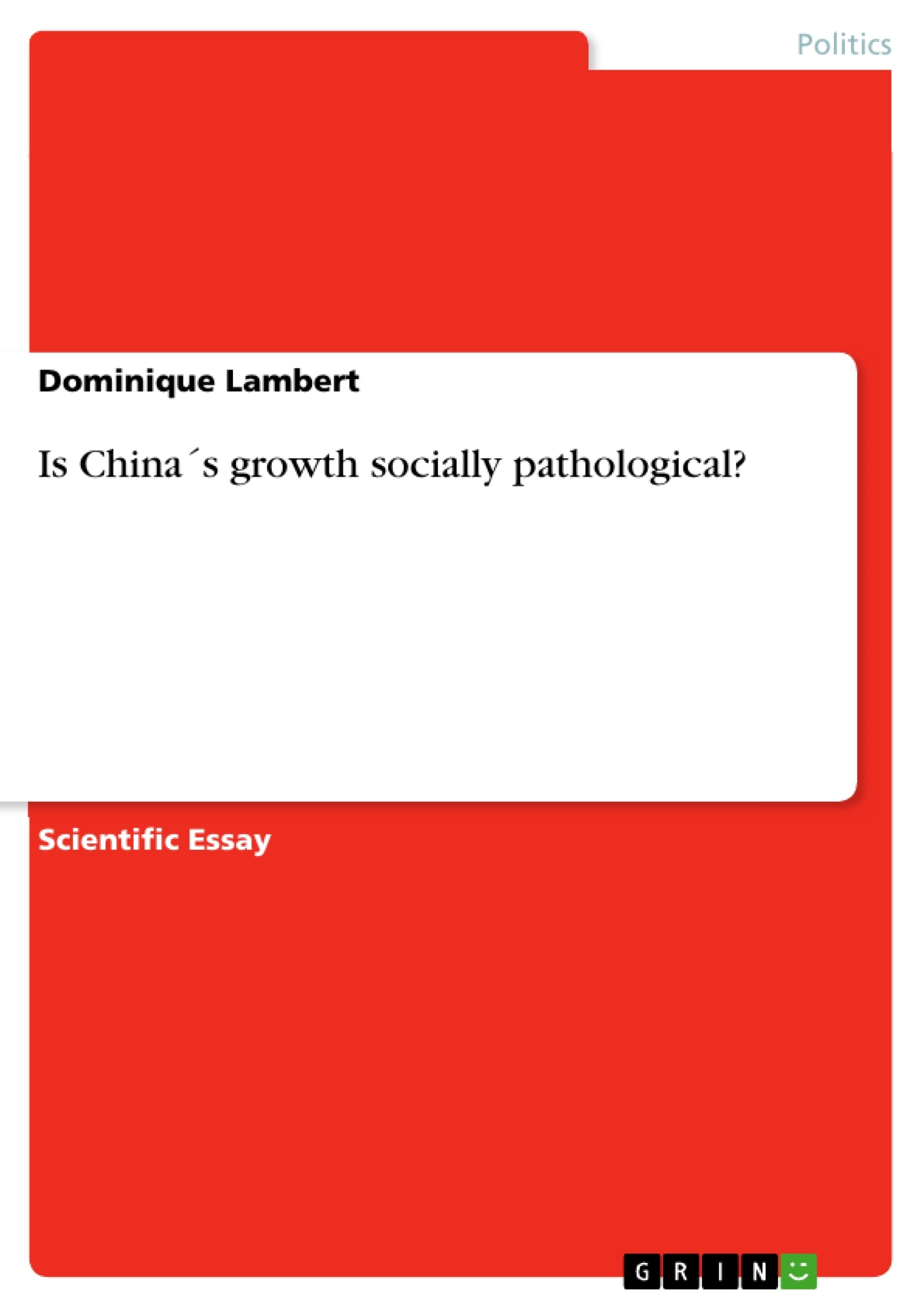China´s policies seem to be in many ways far apart from what western societies consider being fair and just. The reason is that the Western hemisphere shares a fundamentally different belief system of what "justice" and freedom" mean. This leads to the main question of this paper, if China´s growth is "socially pathological". For answering that, we will first compare China with "free market" democracies, in a second step provide some data representing indicators for China´s "social level" and in a third step talk about "workforce exploitation" and perpetrators of partially difficult circumstances.
Inhaltsverzeichnis (Table of Contents)
- China's Growth: Socially Pathological?
- Comparing China with Western Democracies
- Data on China's Social Level
- Workforce Exploitation
- China's Economic Success: Opportunity or Disaster?
Zielsetzung und Themenschwerpunkte (Objectives and Key Themes)
This paper examines the question of whether China's rapid economic growth, despite its successes, is "socially pathological." It compares China's political and economic system to that of Western democracies, analyzes data on China's social indicators, and explores the issue of workforce exploitation. The primary objective is to provide a balanced and nuanced analysis of China's social development in the context of its economic growth.
- The contrasting political and economic ideologies of China and Western democracies
- The impact of China's economic growth on its social development
- The challenges and complexities of measuring and evaluating China's social progress
- The role of workforce exploitation in China's economic success
- The interconnectedness of global consumer demand and working conditions in China
Zusammenfassung der Kapitel (Chapter Summaries)
The paper begins by contrasting China's political and economic system with that of Western democracies, highlighting the fundamental differences in their beliefs about justice, freedom, and the role of the individual. It then presents data on various social indicators in China, such as unemployment, poverty, education, health, and social security, comparing these to similar indicators in Western democracies. The paper explores the complexities of interpreting this data and the limitations of using it to draw definitive conclusions about China's social well-being. The final section focuses on the issue of workforce exploitation in China, examining the dynamics of cheap production costs, global demand, and working conditions. It emphasizes the role of consumer demand in shaping these conditions and challenges the simplistic view of China as solely responsible for the exploitation of its workforce.
Schlüsselwörter (Keywords)
China, economic growth, social pathology, democracy, communism, Confucianism, social indicators, workforce exploitation, global demand, consumerism, working conditions.
- Quote paper
- Master of Social Entrepreneurship Dominique Lambert (Author), 2012, Is China´s growth socially pathological?, Munich, GRIN Verlag, https://www.grin.com/document/300787



